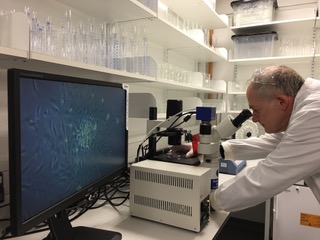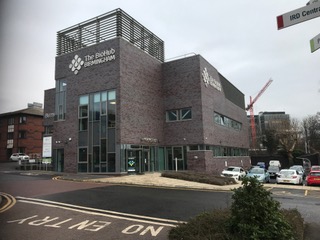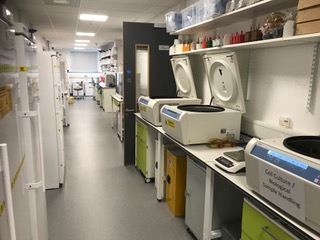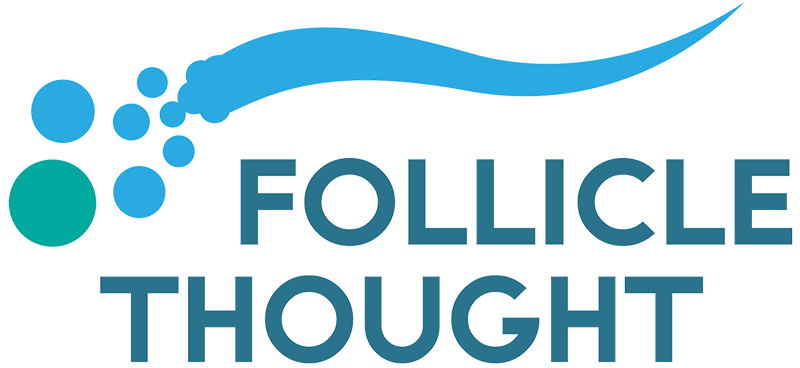HairClone Interview With Paul Kemp: Part 2
Please enjoy the second part of our interview series with Paul Kemp PhD, CEO of HairClone.

FT: Can you give us a step-by-step of how a therapy like HairClone’s goes from the R&D phase into the clinical setting?
PK: If you consider it at its very simplest there are 4 players involved in any treatment. The patient who needs the treatment, the clinician who provides it, the company that makes it and the government who controls the process and wants to both protect the patient but also give them access to innovative new treatments.
The Government provides the clinicians with a license to practice medicine using his or her skill to provide the best treatment for their patients. The government also provides companies with a license to market a treatment and promote it through very specific claims for very specific patient groups to clinicians. These claims are very carefully described in the labeling of the marketing license (sometimes called marketing authorisation). In order to gain a marketing license the company has to very carefully prove these product claims through clinical trials. As I have mentioned before, these are expensive, time consuming and directed towards proving those specific claims. The application process just to get the regulatory approval to start a clinical trial takes many months and costs hundreds of thousands of dollars. Companies generally budget in excess of $10-$20K per patient just for the cost of the administration involved in monitoring a trial and this doesn’t include the cost of treatment. Even after the all the patients have been recruited into a trial (which can involve several hundred patients) the company has to wait until the last patient has completed his or her follow up (and the follow up period can be years!) before they are able to compile all the data and submit this to the regulators. Typically, then it can take another year or two before the regulators are able to review all this information and provide a marketing license. If during the clinical trials the treatment seems to work for a different patient group or in a different way to that expected, then the whole process has to start again. Medicine is littered with products that took a long time to find success. Minoxidil was first used in clinical trials in the 1950’s to treat ulcers, then it was used to treat hypertension, but it took 30 years of work in “Big Pharma” before minoxidil gained a marketing license to treat hair loss. Similarly, finasteride took 20 years of research and clinical study again in big pharma to gain its first marketing license and that license was to treat enlarged prostates. It took several more years to gain a marketing license for the treatment of androgenetic alopecia!
Biotechnology companies rarely have the funds to redo clinical trials, so they need to get it right the first time in order to succeed by this route. However, fortunately governments allow clinicians to provide treatments to patients ahead of these marketing licenses through various exclusions. Perhaps the best known of these exclusions is the “off-label” use of a product. Clinicians for example used minoxidil tablets which had a marketing license “label” in 1979 to treat hypertension “off-label” for many years by mixing the tablets with various liquids to form a topical suspension. Eventually in 1988 UpJohn received a marketing license for a topical solution of minoxidil to treat hair loss which they called Rogaine. It is clear from the histories of these two well-used medicinal products that treatments evolve and it is often many years before marketing licenses are granted for a specific use. This development process takes hundreds of millions of dollars and a great many promising products never have the financial backing to get these licenses.
However, as well as these off-label uses of a product with a marketing license, regulators also allow clinicians to provide medicinal products to patients even before a product has any marketing license if the clinician believes the treatment is in the best interests of the patient. Different countries regulate this in different ways and the UK’s regulator (the MHRA) is one of the most innovative. They state the regulation in the UK as such:
Regulation 167 of the Human Medicines Regulations 2012 (see Appendix 1) provides an exemption from the need for a marketing authorisation for a medicinal product which is supplied:
- in response to an unsolicited order;
- manufactured and assembled in accordance with the specification of a person who is a doctor, dentist, nurse independent prescriber, pharmacist independent prescriber or supplementary prescriber;
- for use by a patient for whose treatment that person is directly responsible in order to fulfil the special needs of that patient; and meets the conditions specified in regulation 167(2)-(8).
As these products are for “the special needs of that patient” they are known as “specials”. The MHRA requires that the manufacturer of these “specials” must hold a Manufacturer’s “Specials” Licence granted by the MHRA. In this way they ensure that the treatments are manufactured to the same level of quality as a treatment used in a clinical trial but the difference here is that the clinician uses the product to treat the special clinical needs of a specific patient rather than working to obtain specific data to support the claims of a marketing license.
HairClone and our clinical partners intend to utilise this exemption to both provide early patient access to the potential treatments as well as allowing the clinical partners to utilise their skills in order to best determine the treatment pathway for patients. Once this treatment protocol is well understood then HairClone will use this information to carry out the clinical trails needed for marketing license in the various countries. This will then allow us to advertise and promote the treatment but this will take a considerable amount of time.

FT: What is the process for a patient to receive a treatment under the UK’s MHRA “Specials” designation?
PK: The “Specials” exemption is only available for treatment in the UK administered by clinicians licensed to practice in the UK. However, the patient does not need to be a UK resident. It is important to point out that although neither clinicians or Companies could “solicit” an order from a patient through marketing or advertising as a “special”, clinicians could supply cultured follicle cells that they order from a manufacturer with an MHRA’s Specials license who has the ability to culture hair follicle cells. If we have the funding to do this, HairClone fully intends to be able to supply follicle cells through this route in 2019. Because the use of living human cells is not like taking a pill or applying a lotion, HairClone will only take requests from our clinical partners who we trust and who will be trained in the handling and delivery of the cultured cells.
The emphasis is therefore on the patient to seek out this treatment but the intended process is that they could go to any of our clinical partners to determine if the clinicians feel they are suitable. These clinicians could extract the follicles in their own clinics and ship them to HairClone where they would either be cryopreserved and banked until needed or cultured directly in an MHRA licensed facility. The patient would then travel to a HairClone UK partner’s clinic (Initially this would be the Farjo Hair Institute) where the cells would be injected in their scalp. Any follow on to this procedure could then take place back at the original partner’s clinic.
FT: Are the questions “when will it be available?” or “how much will it cost?” able to answered just yet?
PK: One of the questions that we are asked the most is “When will a treatment be available” and people are understandably frustrated at not being able to give a clear answer. However, the answer depends on where the person is living and what they mean by “available”. As I mentioned above, we plan to offer our “cell expansion service” to clinical partners hopefully around the middle of 2019 so it will then be available for follicle rejuvenation but only in the UK. We estimate that it will take a year at least for the clinical partners to best understand the most suitable patients and treatment protocols but as soon as they do we plan to apply to start clinical trials in partner clinics.
To some people this is what they think of when they think of a product being “available”.Then when the trials have been completed and the marketing licenses obtained the product is finally fully available and HairClone could advertise the treatments. As I have described above, this process will take several years to fully complete but for motivated and knowledgeable patients, the treatment will be available long before the marketing licenses are obtained. This is one of the main reasons HairClone is working to create a community of scientists, clinicians and patients so that we can keep people as fully informed as possible throughout this process.
Just like “availability” does not have a clear answer neither does cost. The eventual cost of the treatment when it has the marketing licenses will need to be such that it covers the cost of manufacture, marketing, distribution and delivery of the treatment, the clinician’s costs of follicle excision and cell implantation as well as recouping all the costs required to obtain the marketing licenses and also providing a suitable return for all the investors and shareholders who helped fund the development (and crowdfunding participants will themselves be shareholders). However during the development stages that I described above one of our main needs will be for information that we can apply to carry out (and raise funds for) this development process and the costs that we need to charge the patient for things like cell expansion will reflect this. This is yet another reason we are creating this community.
All of the founders of HairClone as well as our clinical partners have provided both funds for the development as well as giving a considerable amount of very valuable time and resources for free. We are all fully committed to making this treatment work.

FT: What’s the next milestone HairClone is currently heading for?
PK: 2019 will be a critical year for us and a lot will happen in the next 12 months. Most importantly our next milestone is to have a successful Crowdfunding! We have developed a business strategy that is incredibly cost efficient but we still need funds to continue our work and by crowdfunding we are enabling anyone to help develop a successful treatment and become a shareholder so they can share in the success.We are working closely with a licensed tissue bank to extend their license to enable us to bank hair follicles and this will hopefully launched in the next couple of months. We are also partnering with an MHRA licensed cell manufacturing facility to enable us to offer our cell expansion service around the middle of this year.
Thank you Paul for another excellent interview and I look forward to the next installment.
Readers, please ask any questions that you may have in the comments section below and either Paul will get to them here or we will cover them in the next interview. Thanks!
Posted in HairClone


Admin thats the greatest news i have ever heard.Theoritically this year will have a somewhat technical cure.Thank you so much for yoyr hard work and your care
After this i believe there will be a snowball effect regarding the cure of aga.Those news will spread among the investors much rapidly as many anticipate!!Wide application of the therapy might come much faster.combination with ht may prove a technical cure.Sincere thanks admin!!!!!!
Hi! What exactly is this? From the earlier posts it’s tather unclear what is being researched and what is being offered. Also- the name Israel’s is a bit misleading. This seems like a glorified PRP? Would appreciate some explanation : ) cheers and many thanks x
Hi Kiki
Sorry to have taken time to reply. What we are aiming to do with the first rejuvenation product is to repopulate the DP region in miniaturising hair follicles and return the hair shaft to its original dimensions. If we are right then the follicle would only have to be treated once. Additional treatments would be needed for newly miniaturising follicles but all this needs to be tested
I am not sure if there is a consensus about what the possible mechanism of action of PRP is.
regards
Paul
What happened to Medipost?
Coming soon as far as I know.
Is it possible to know if this tretment will work even for people with alopecia caused by hypothyroidism?
Is it possible to know if this solution could be available even for people with hypothyroidism?
Thanks for the update dear admin! keep us updated please
I dont want to be a buzz kill. But I believe that it is only the hair banking that will be available this year and not the hair cloning. The banking is a great idea but really applies for hair loss prevention rather than cure. Based on the 3 year of which I have read this blog, I have come to the conclusion that readers have an average NW5.5.
@mr Kemp or admin, please feel free to contradict my statement. Nothing would make me happier if I misunderstood something.
Many thanks for this. I have a couple of questions for Paul: (i) firstly, I am one of those people where the disease has to some extent spread into the horse shoe, so that the hair at the sides and back are thinner than they were (though the very back seems to be holding on for now). One of my concerns is that the cells taken from the back would not be affected by the disease in time, but are totally immune. Is there a way of telling whether the cells are so immune before injection into balding areas?; and (ii) the hair at the front and top of my head is now very thin (I have been slowly losing my hair for some 34 years): would this procedure of hair rejuvenation still hold hope for me, or is it really for people with small areas of balding? Finally, may I express a hope: that those working on the longer term goal of hair generation are also looking seriously at the latest breakthrough in South Korea concerning the transplant of hair from one donor to another (albeit with mice). Once we have hair regeneration, the ability to use cloned hair follicles from a donor who is completely unaffected by the disease will surely put a end to pattern baldness. Thanks again.
We are working towards having the follicle banking and cell expansion services available to partner clinicians this year. This will not be the generation of brand new follicles, that will come later. Advances are being made in by several groups but there is still a lot of work to be done in that area. Our partner clinicians hope to stepwise look at what kinds of patients and balding regions could be treated by rejuvenation. They could also look at combinations of cell therapy with hair transplantation. We very strongly expect that there will not be a “one size fits all” treatment which is one reason we are so keen on developing our clinical partner network
Our PhD student in Claire Higgins’ lab is working on looking at the gene profile of regions affected and not affected in AGA and is seeing very definite differences. That work will be presented at the World Congress for Hair Research in Barcelona in April and we hope that this will lead to the test that you mention. Allogenic hair transplant (from one patient to another) would have several hurdles to overcome in humans and there have been many many examples over the years that have proven mice are very different to humans.
regards
Paul
Thanks for responding. I have pledged some money re hair banking via the crowd sourcing platform, and urge others to do the same.
Thankyou for your pledge! The crowdfunding campaign closes at the end of Feb so there are just a few days left for people to pledge. As I have mentioned our aim is to let anyone become an investor in HairClone and help us make hair loss history
What do you mean when you say the generation of new follicles will come later can you elaborate on that?
What I read the cost is approx 4K – 10K depending on degree of affected scalp area. Is this accurate? Will we have to travel to UK to get treatment?
We are not sure yet on what the cost will be for the treatment. As I mentioned in the interview it is affected by a lot of factors. Yes until we obtain marketing licenses in the various countries the only clinicians that will be able to use our cell expansion service are those in the UK. Follicles could be excised and shipped to us however from partner clinics around the world
have they cloned hair successfully or it is in still research???
The development of hair rudiments that when transplanted would produce terminal hair shafts at an appropriate density is still in research. Others are also working on this in other labs around the world
Great effort by HairClone team. I Will follow their progress with great enthusiasm
Thanks! that is very appreciated
regards
Paul
Why is he a norward 4 to 5 if he works alongside a viable treatment everyday?
It’s because the treatment is not developed yet.
Can a drop of the eye be used to treat baldness and a combination of Cyporin (Cyclosporine) and LUMIGAN (bimatoprost)?
● Cyclosporine A /
This drug is performed in clinical trials under the name of WAY-316606
And also in other clinical trials under the name RT1640.
● bimatoprost /
This drug has proven effective in lengthening eyelashes and hair growth is minimal.
The question to forum members and consultants in the treatment of baldness /
Can baldness be treated with eye drops because it contains an effective substance in the treatment of baldness?
Do you have any side effects?
They clone the cells, but they only rejuvenate weak follicles. They don’t generate new follicles yet. They are working on that part still.
hairvitro did it
Cassiopea announces very positive results from the interim analysis of the Phase 2 dose series for Breezula (Clascoterone) in the treatment of androgenetic alopecia
Hi,
Will these cloned follicles be DHT-proof? Or will they need continuous maintenance? Also, how do I beocme a part of HairClone’s patient community?
Thank you
Hi Greg
Thanks for your question. We intend to show that by replacing lost DHT sensitive DP cells from miniaturising follicles with DHT insensitive ones that we make these follicles resistant to DHT.
Best way to be involved is to contact the clinical partner closest to you though we are not yet at the stage of doing clinical trials.
Regards
Paul
Thank you for the info, Paul. I am excited to witness the cure for hair loss being developed in action!
I had some follow up questions that I forgot to ask you initially. Are the follicles you’re developing currently aesthetically pleasing? Will you be sharing any progress at the 2019 world Hair Congress? Are you at all working with RepliCel or Riken technologies?
Also, do you know of the best stem cell hair loss treatment available at the moment? (Mesynchamel stem cells vs. ACell’s extra cellular matrix) I understand the procedure you’re developing will completely level the rest of the industry but I’m looking to do something about my hair until it’s ready. And lastly, is there a way to sign up for clinical trials?
Thank you for your time and I’m excited to have my hair back soon.
Hi again
thanks for your follow up questions. I cant give my opinions on the other cell based work for hair treatment as I have too much of a vested interest in our approach!!
As to your second question we are concentrating at the moment on rebuilding miniaturising follicles. We are doing research on generating new follicles but that is a much more challenging approach than repairing the follicles that nature provided but are miniaturing through loss of specific control cells.
At the moment, however my main personal priority is to raise the funds needed to carry out this work and bring these treatments to the clinic.
regards
Paul
Hi again Paul,
I heard from someone that hair cloning will be available in 2-3 years and will cost 40 thousand to 60 thousand. Is this true?
Thank you
Hi Greg
I am sorry to be picky but the timings and costings depend on what you mean by hair cloning and what you mean by available. Do you mean a system whereby you can go into a hair transplant clinic and see advertisings for systems that can generate brand new hair follicles? Or do you mean being able to be involved in clinical trials for a system that is looking to rebuild miniaturising hair follicles?
Also,
I know hair cloning will be able to generate new hairs that are DHT proof but what about existing hairs on the head that are sensitive to DHT, stopping them from miniaturization? Will that require a different treatment?
How long do you think the waitlist will be for this procedure, whether or not you have your follicles banked? Is there a way to get your follicles banked today and should an 18 year old male such as myself do so?
Thank you again
Cellular expansion?
What’s that? Hear it’s goinh to be available this year. Sorry for all the questions but I’m just really interested in this stuff now.
Thank you